Blogs
How to open a broker account?
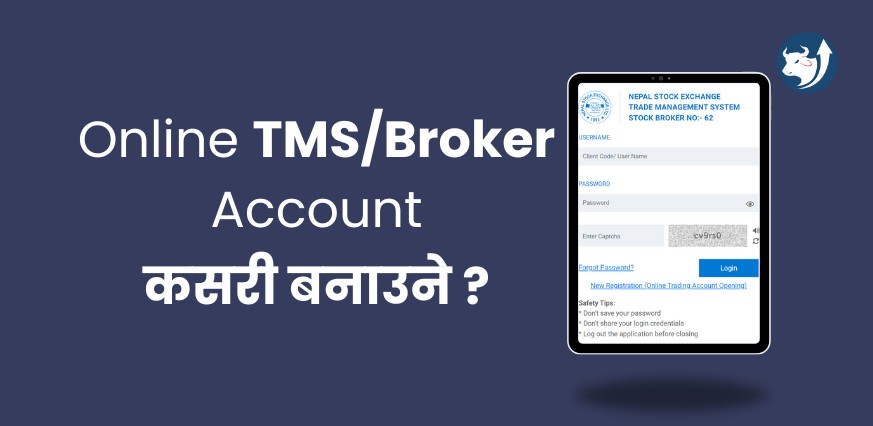
If you are interested in stock trading, you may have heard about buying and selling shares. The process for buying and selling shares is completely different from applying for the company’s Initial Public Offering (IPO).
In Nepal’s context, you can apply for an IPO using the MeroShare app online. However, Meroshare does not allow you to buy or sell shares. You need to open a broker account to buy or sell shares. In this blog, you will learn to open a broker account in a step-by-step process.
What is a TMS/Broker account?
A broker account is an account that allows you to buy or sell shares. Some of you may think you can buy/sell shares yourself after finding a buyer/seller, but that is not possible in the digital world. After opening a Broker account you will have a TMS account access through which you can place buy/sell orders. If you have placed a sell order and the order is executed then, you have to transfer the shares to the buyer from the Meroshare account. Here broker acts as a mediator in transferring shares and checking the status.
It is the international standard that you will need a broker account to get involved in any of such transactions.
How do you open a TMS/Broker account?
To open a broker account choose the broker from the List of stock brokers in Nepal. You can select any broker depending on your choice, we advise you to choose the broker that is nearest to you. Suppose you choose Capital Max securities, there is a “TMS login” link click on that.
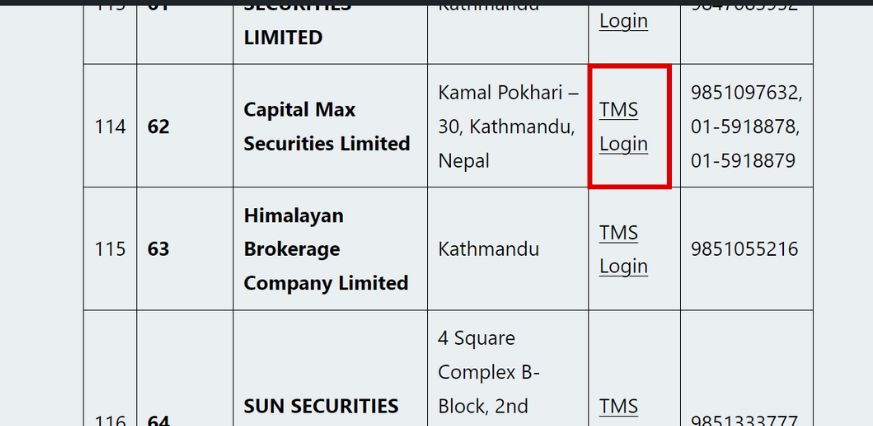
Step 1: Then, you will be directed to the NEPSE Online Trading System page. Click on the “New Registration (Online Trading Account Opening)”.
Note: For example purposes, we have selected Capital Max securities i.e. broker no. 62. Therefore we are creating a broker account from the respective broker.
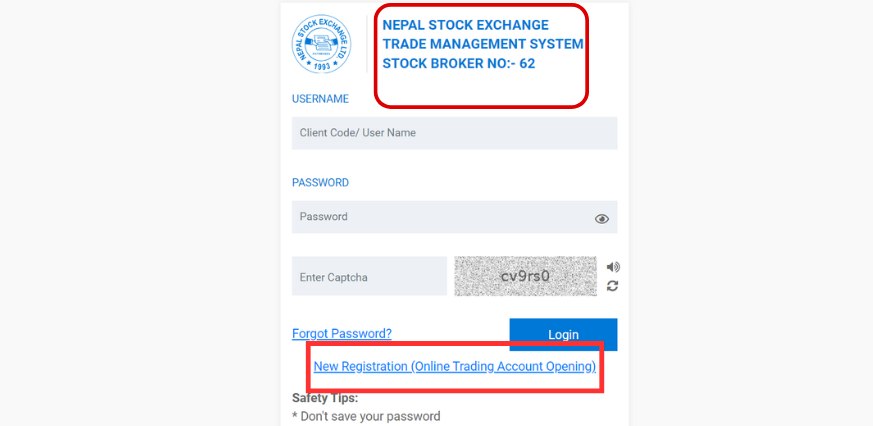
Step 2: Then, you will be redirected to an online registration form from NEPSE. Your form is divided into six parts: General Details, Address Details, Bank Details, Depositary Details, Document Upload, and User Agreement.
Step 3: Under the first part fill in your “General details”. Sections with * mark are mandatory to fill.
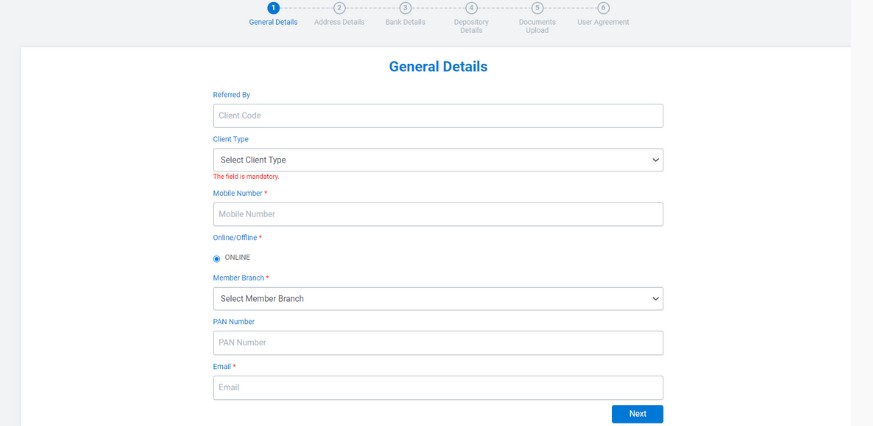
Step 4: Select your client type as ‘individual’. Similarly, fill in your address under the
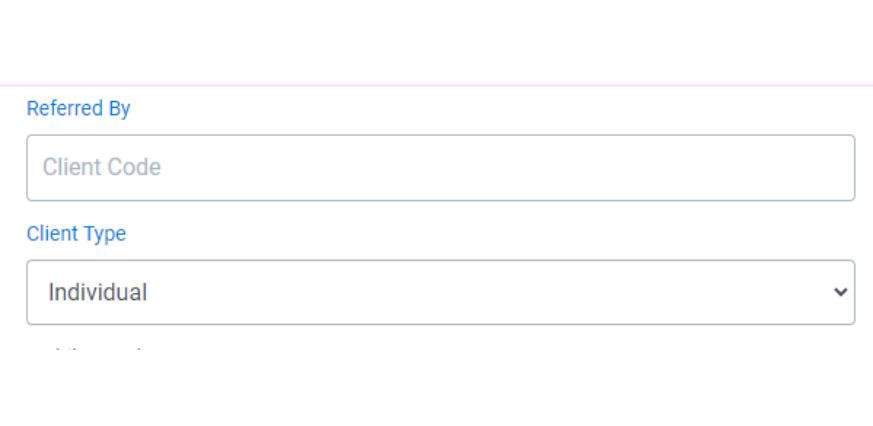
Step 5: Fill in your “Address Details” and click next.
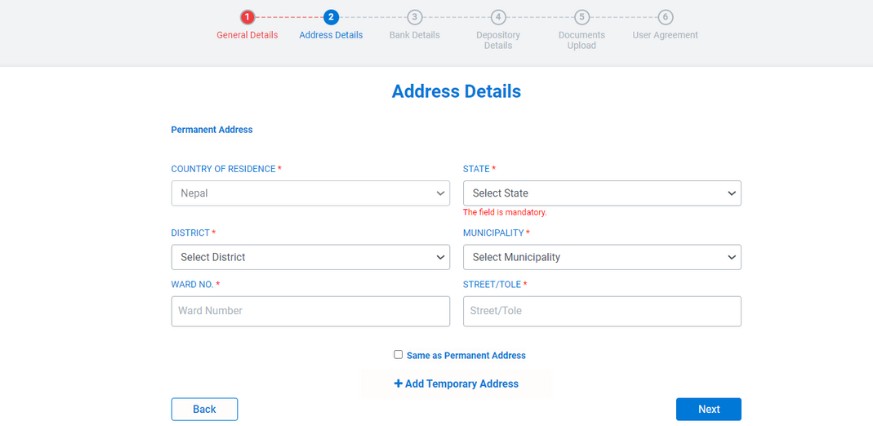
Step 6: Fill in your Bank details and click Next.
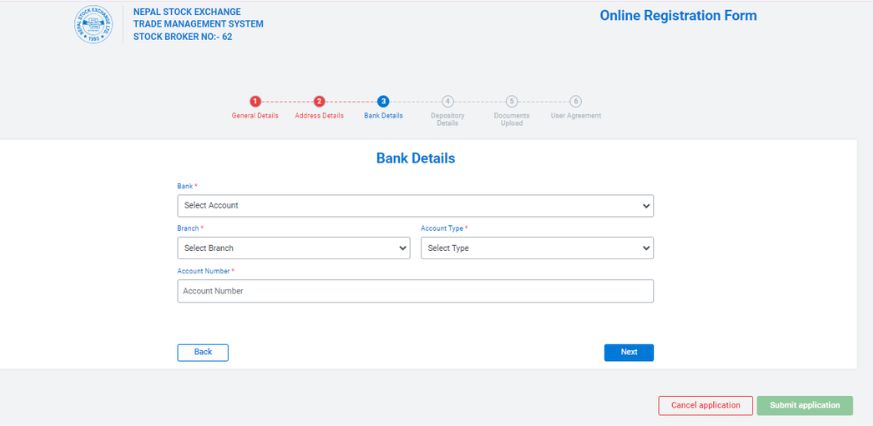
Step 7: Fill in your ‘Depository Details’ i.e. 16-digit BOID number provided by your Bank. Click Next.
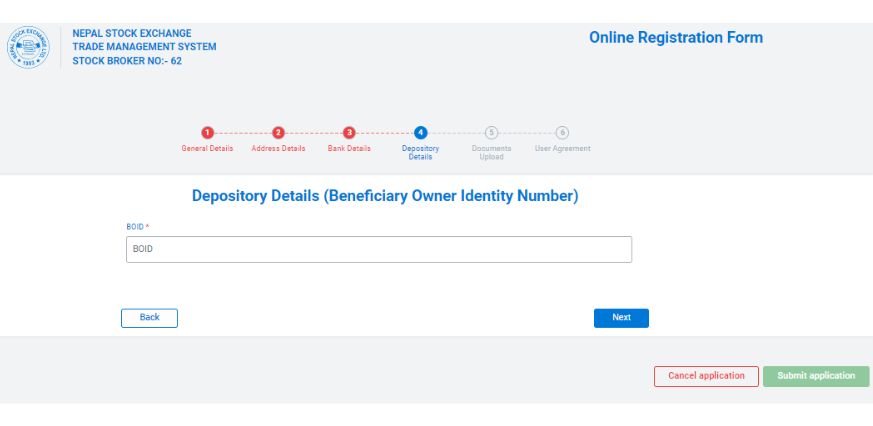
Step 8: Make sure you have your virtual documents ready, to upload them on the ‘Documents Upload’. All the documents with red asterisks are mandatory.
In the case of a minor, “You have to upload the documents without the asterisks also.” Click Next.
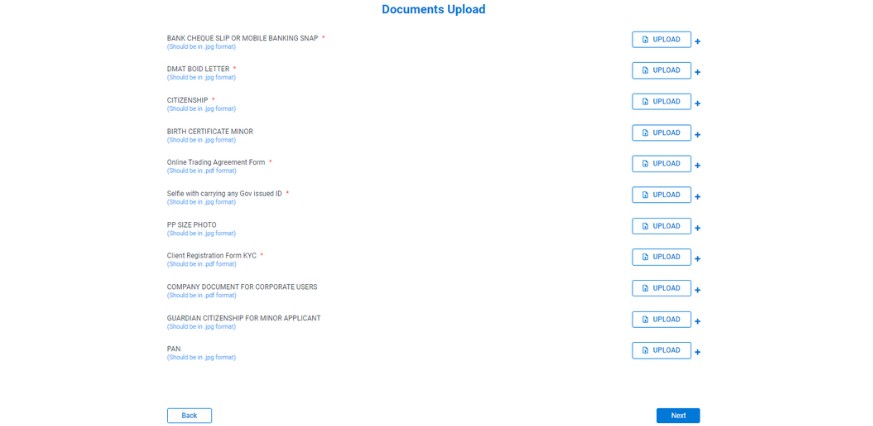
Step 9: Here, the Client Registration Form KYC, Online Trading Agreement Form, and COMPANY DOCUMENT FOR CORPORATE USERS should be submitted in PDF format. Fill out all the forms make a PDF, and upload it to the respective section. Click Next.
These forms can be downloaded from the respective broker’s website under the “Download Menu”.
Step 10: Read the user agreement carefully and click ‘Submit Application’ to apply.
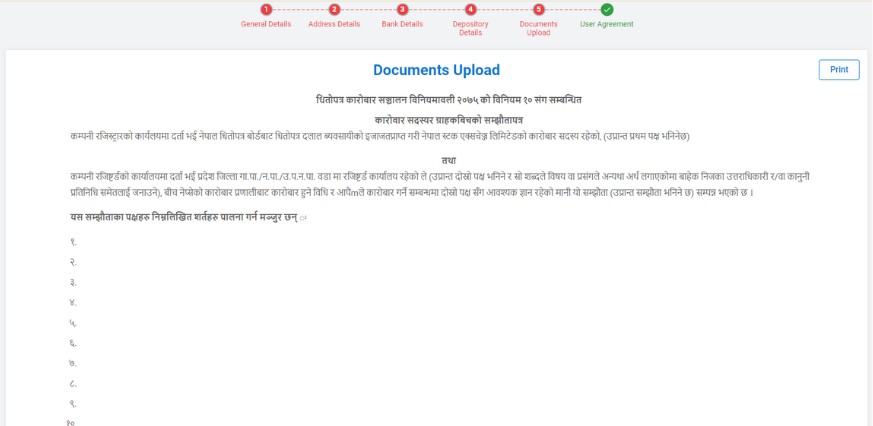

This was all you had to do from your end. Now, the broker will verify the details, and they will create a broker account for you.
Step 11: You will be notified through an email titled ‘Client Activated’.
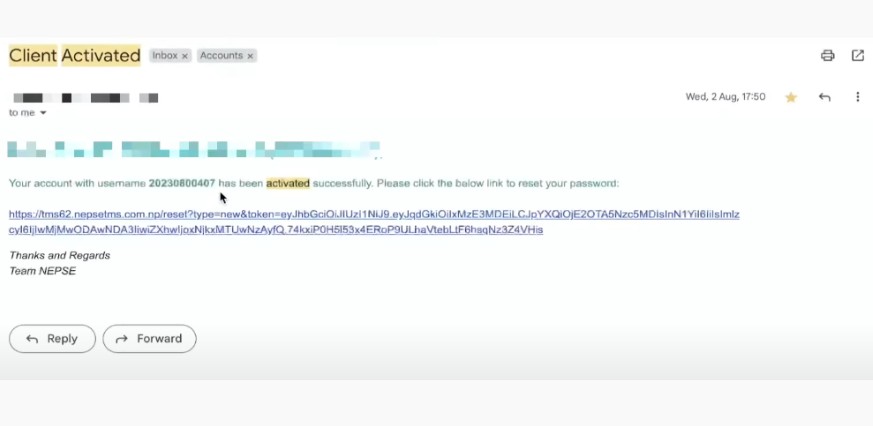
Step 12: Click on the provided link, and you will be redirected to another webpage. Where you can reset your password. After resetting your password, you can start trading by logging into your account.
It may be a long procedure with many details required but, this is for everyone’s safety. This was a simple and easy way to open a TMS/broker account. Don’t worry, create your broker account and begin your trading journey.
You may also like:
- Basic requirements for share trading
- Nepal Share Market: Everything you need to know
- How do I open a DEMAT account in Nepal
FAQs
Can I have more than one broker account?
Yes, you can have more than one broker account.
How much does a broker charge in Nepal?
Brokers in Nepal charge a very minimal amount. Their commission can range from 0.40 to 0.27.
What is the minimum amount to open a brokerage account?
The minimum amount to open a brokerage account depends on the brokers. So, go around and ask how much they charge.
What is the best broker account in Nepal?
So far XTB is the best broker account with a score of 4.8/10.
Is there a minimum to open a stock account?
No, there is no minimum to open a stock account.
Blogs
Private Power Producers Protest ‘Take and Pay’ Provision in Budget
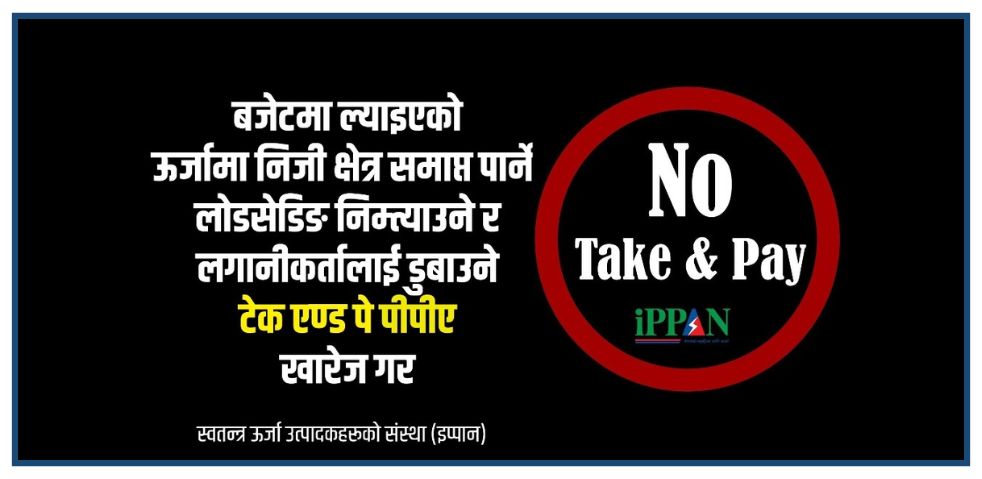
Private energy entrepreneurs in Nepal have taken to social media, protesting the government’s decision to introduce the ‘Take and Pay’ (Liu Ra Tir) system for electricity purchase agreements (PPA) in the new fiscal year budget.
Under this system, the government would only pay for the electricity it uses, instead of paying for the total electricity generated by hydropower projects. Entrepreneurs argue this move could severely hurt the private sector, discourage investment, and push the country back toward power shortages.
Online Campaign Targets Top Officials
Energy producers are now directly appealing to key government figures. They have publicly tagged Prime Minister Pushpa Kamal Dahal, Finance Minister Barshaman Pun, Energy Minister Shakti Bahadur Basnet, and NEA Executive Director Kulman Ghising on social media, urging them to withdraw the Take and Pay provision.
This digital campaign comes just days after developers handed over a memorandum to the Prime Minister and bombarded top officials with hundreds of SMS messages requesting the same.
Why Are Entrepreneurs Worried?
Entrepreneurs claim that this decision will:
- Weaken the private sector’s role in the energy industry
- Risk the return of load-shedding (power cuts)
- Causes financial losses to investors
- Damage the overall economy
The Independent Power Producers’ Association of Nepal (IPPAN) has strongly opposed the provision. According to IPPAN’s Vice President and protest coordinator Mohan Kumar Dangi, the policy shift will discourage private hydropower development, especially for Run-of-River (RoR) projects, which are most affected by the new model.
Ongoing Protests and Next Steps
Since Asar 6, private power developers have been staging a phase-wise protest. On the third day of their movement, they moved their campaign to social media to raise public awareness and pressure the government.
Dangi warned that if the government ignores these peaceful efforts, the protests will escalate. Planned steps include:
- Lobbying political party leaders in Parliament
- Launching a nationwide street protest
- Returning the keys of privately built hydropower projects to the government — a symbolic act of handing over control
Background: The Budget Controversy
The controversy started when the budget for FY 2082/83 (announced on Jestha 15) stated that all future PPAs for RoR hydropower projects would be done under the Take and Pay model only. This was a major change from the previous Take or Pay model, where producers were paid even if electricity wasn’t consumed, offering more security for private investors.
Conclusion
The ‘Take and Pay’ decision has sparked serious concerns across Nepal’s private energy sector. Developers fear this could lead to a slowdown in future hydropower investments, and possibly, a return to unstable electricity supply. With pressure mounting both online and offline, the government’s next move will be critical for the future of Nepal’s energy landscape.
Blogs
Nepal Rastra Bank to Withdraw NPR 60 Billion from the Banking System on Monday
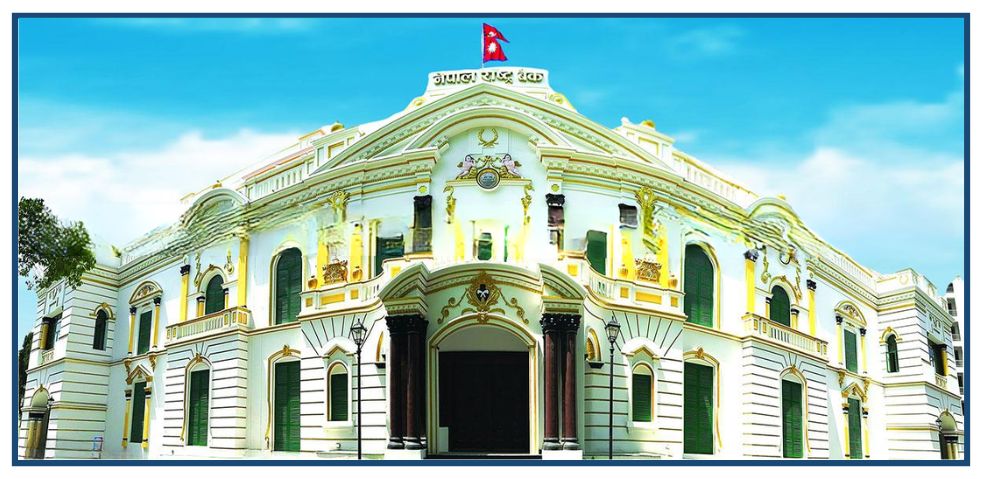
Nepal Rastra Bank (NRB), the central bank of Nepal, has announced it will withdraw NPR 60 billion in deposits from the banking system on Monday through a deposit collection auction. This move comes as excess liquidity continues to remain in the banking sector since the beginning of the current fiscal year 2081/82.
According to NRB, the withdrawal will be conducted through the online bidding system, and the interest rate will be determined through competitive bidding. The collected amount, including both principal and interest, will be settled on Shrawan 18, 2082 (August 2, 2025).
Key Auction Details
- Total Amount: NPR 60 billion
- Minimum Bid Amount: NPR 100 million
- Bid Increments: Must be divisible by NPR 50 million
- Eligible Participants: Class ‘A’, ‘B’, and ‘C’ licensed banks and financial institutions
- Auction Method: Competitive bidding via NRB’s online platform
- Maturity & Settlement Date: Shrawan 18, 2082
Why Is the Central Bank Taking This Step?
As per NRB, the banking system is currently holding excessive liquidity, with total deposits crossing NPR 7 trillion. However, this liquidity is not being effectively utilized, as loan disbursement has remained slow. This reflects a lack of investor confidence and limited credit demand in the economy.
To control liquidity and stabilize the financial market, NRB has been consistently withdrawing funds using monetary tools since the start of the fiscal year. Tools like reverse repo, outright sale, deposit collection, and bond issuance are being used depending on the situation, whether there is too much or too little money in the system.
Recent Trends in Liquidity Control
Last week alone, NRB withdrew NPR 90 billion in a single day, highlighting the ongoing efforts to manage surplus liquidity. The central bank is using such actions not only when there is an overflow of money but also in times of shortage, to maintain balance in the financial system.
Conclusion
The decision to withdraw NPR 60 billion on Monday shows that Nepal Rastra Bank is actively managing liquidity to ensure financial stability. With a large amount of unused funds in the system, these measures are crucial to prevent inflation, reduce financial risk, and encourage more effective use of capital in the economy.
Blogs
52-Week Low & High Microfinance Shares in Nepal: Current Status and Future Outlook

The microfinance sector in Nepal has been moving sideways for a long time. The group sub-index has been fluctuating between 4,600 and 5,600. Recently, the index reached a swing high of nearly 4,900 but then closed at 4,671.74.
The national budget did not bring any immediate changes that could affect the capital market. So, investors are now waiting for the upcoming monetary policy. After the newly appointed Governor of Nepal Rastra Bank, Dr. Bishwanath Paudel, reduced the risk weight on margin loans from 125% to 100% during the third quarterly review, investor confidence grew.
Investors now hope that the following changes will be introduced in the next monetary policy:
- Removal of the current Rs. 15 crore limit on individual investment
- Removal of the 15% dividend cap on microfinance institutions
- Permission for banks and financial institutions to trade shares for less than one year
Governor Paudel’s public remarks have made investors hopeful that the upcoming monetary policy will be share-market friendly.
Despite the pressure on the market at the end of Ashar, investors are optimistic about a rebound afterward. Experts say microfinance and insurance stocks—whose prices have not surged yet compared to others—might offer better opportunities in the coming days.
Top 20 Microfinance Companies Nearest to 52-Week Low

Some microfinance companies are trading close to their 52-week low prices. These stocks may offer good value for long-term investors. Here are some examples:
-
Nesdo Samriddhi Microfinance had a high of Rs. 2,641 and a low of Rs. 1,540 in the past year. It is currently trading near its lowest point.
-
Sana Kisan Bikas Microfinance and Jan Utthan Community Microfinance are both trading less than 1% above their 52-week lows.
-
Jeevan Bikas, NIC Asia, Infinity, Suryodaya Womi, RSDC, Asha, and Swabalamban Microfinance are trading just 1–3% above their yearly lows.
-
Other companies like Unique Nepal, Bijaya, Forward, Nirdhan Utthan, Diprox, Mahuli, Nerude Mirmire, National, Samata Gharelu, and Laxmi Microfinance are also trading only 3–5.5% above their low points.
According to experts, these stocks could be worth watching for those looking to invest at lower prices.
Microfinance Stocks Near 52-Week High

Interestingly, a few companies are still trading near their 52-week highs even though the overall market is in a downtrend:
-
Unnati Sahakarya Microfinance reached a high of Rs. 5,276 and is now trading at around Rs. 1,804.
-
CYCL Nepal Microfinance had a high of Rs. 1,958 and is still trading at Rs. 1,615, which is relatively strong.
On the other hand, many microfinance stocks are trading 20–40% below their 52-week highs:
-
Aatmanirbhar, Mahila, Grameen Bikas, Kalika, Global IME, Chhimek, Mero Microfinance, and Abhiyan are all trading 22% to 31% below their highs.
-
NMB, First Microfinance, RSDC, Laxmi, Nirdhan Utthan, Diprox, Sana Kisan, Mithila, National, and Swabhiman are trading 34% to 44% below their 52-week highs.
These stocks may still have room to rise if the market recovers and favorable policies are introduced.
Conclusion
The microfinance sector in Nepal is at a turning point. While the market has been moving sideways, investor confidence is building, especially with hopes for a supportive monetary policy. Stocks near their 52-week lows may offer attractive entry points, while those holding near their highs show relative strength.
For both new and experienced investors, this could be a good time to study the microfinance sector closely and plan for the long term. As always, careful research and risk assessment are essential before making any investment decisions.
-

 Blogs3 days ago
Blogs3 days agoHydropower Gains 7.8% in One Month, Outperforming All Sectors
-
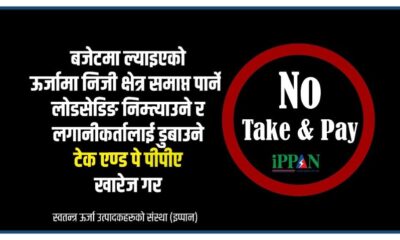
 Blogs10 hours ago
Blogs10 hours agoPrivate Power Producers Protest ‘Take and Pay’ Provision in Budget
-
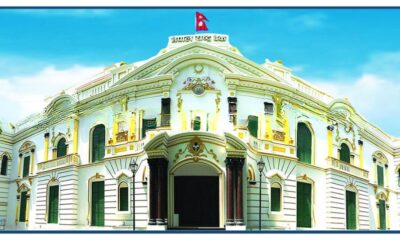
 Blogs11 hours ago
Blogs11 hours agoNepal Rastra Bank to Withdraw NPR 60 Billion from the Banking System on Monday
-

 Blogs12 hours ago
Blogs12 hours ago52-Week Low & High Microfinance Shares in Nepal: Current Status and Future Outlook
-

 Blogs1 year ago
Blogs1 year agoList of Stock Brokers in Nepal with NEPSE TMS Login – Updated
-

 Blogs12 hours ago
Blogs12 hours agoAsian Life Insurance to Issue Rights Shares from Asar 25
-

 Blogs6 months ago
Blogs6 months agoSiuri Nyadi Power Limited Added to IPO Pipeline by SEBON
-

 Blogs3 months ago
Blogs3 months agoPure Energy IPO For General Public


